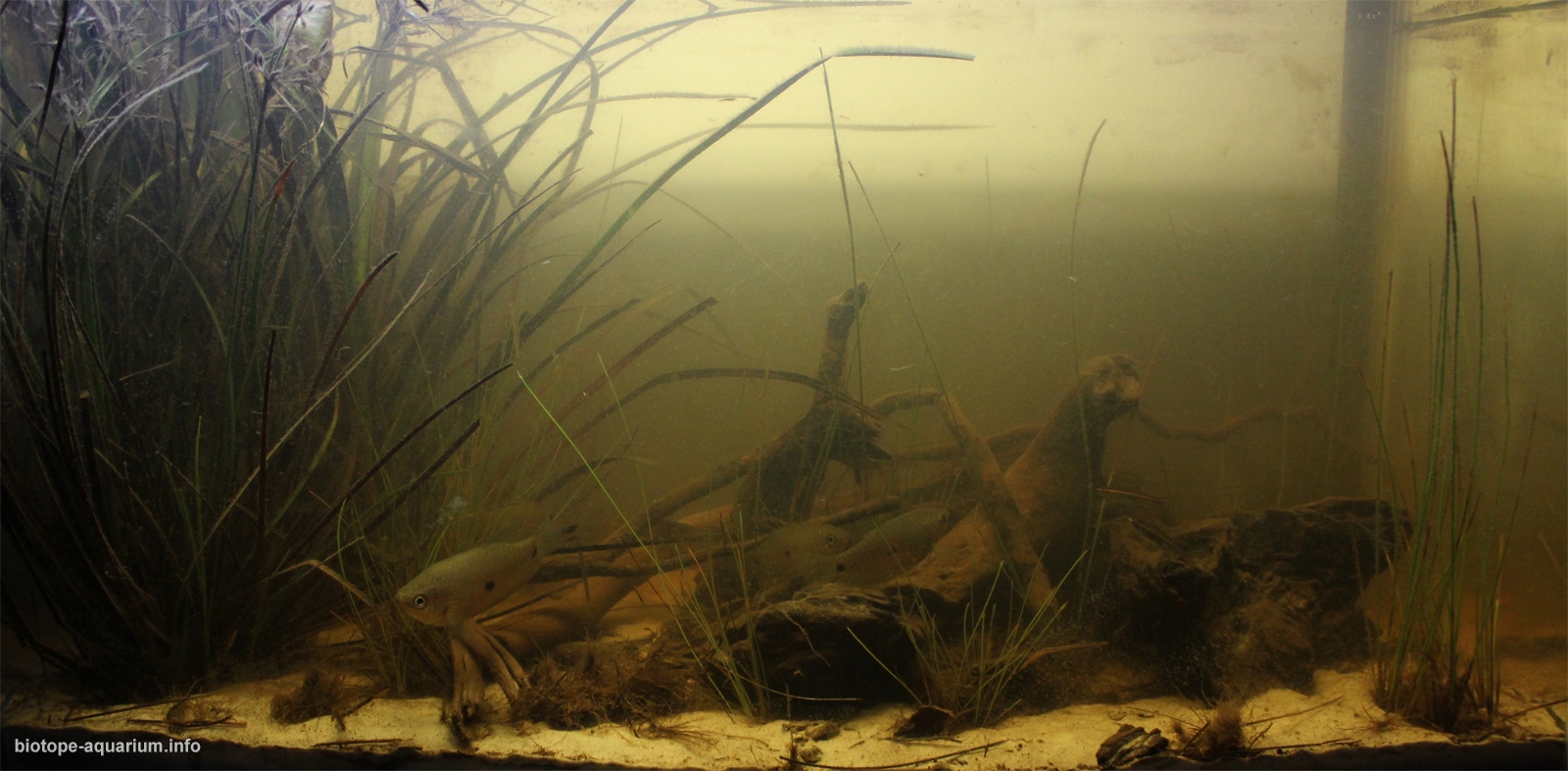Small pools of Badas Peat Swamp, Brunei Darussalam
61st place in Biotope Aquarium Design Contest 2017
![]() Brunei. Mohammad Zaheer Afie bin Zahirrudin
Brunei. Mohammad Zaheer Afie bin Zahirrudin

Volume: 56 L
Dimensions: 60x30x30 cm
List of fishes: Desmopuntius pentazona, Desmopuntius johorensis, Rasbora cephalotaenia, Trigonopoma pauciperforatum, Trichopodus trichopterus
List of plants: All Macrophytes are taken directly from Badas Peat Swamp: Eleocharis ochrostachys, Eleocharis acicularis (most are dead as the water gets tannined just like it would in the wild), Fimbristylis littoralis, Cyperus rotundus (both Fimbristylis sp & Cyperus sp are positioned at the side of the aquarium which acts as the barrier).
Description of decorations: All the bogwood/driftwood & white sand are taken directly from Badas Peat Swamp.
Description of equipment: HOB Filter Eheim Liberty 200(can produce flow of 320 to 760 L/Hr, but can be restricted by a valve before the impeller of the filter), 1x24W Aqua Zonic SUPER SUN T5 AQUARIUM LAMP – 12000K.
Water parameters: Temperature: 28°C(using normal room temperature), pH: below pH 6
Description of the area surrounding the biotope: Badas Peat Swamp, located South East from Seria Town in Belait District. Situated at the lower Badas River, where it meets up with the main Belait River. Beside Badas Peat Swamp is also where the Badas Water Pump Station is currently located at where River Water from Belait River is pumped for various uses. Today, Badas, has railroad tracks used when Bruneiwas still under British protectorate, but now about more than 90% of the tracks have been disassembled, whereas the rest are currently either rusting in the Peat swamp, or already submerged. When it does not rain for a few days, the water can get really shallow, this is the time when fishes will mostly spend time swimming in the small shallow pools of the Swamps where no predatory fish can swim to, which is why these pools are heavily populated with thousands of fishes.
Description of the underwater landscape of the biotope: The swamp consist a lot of macryophytes which creates small patches of pools all over the swamp, especially at shallow areas. Parts of the swamp consist of various substrates at different areas, nearer to the edge of the swamp, white sands can be found, and where as beige colored clay & black soil/peat could be found more towards the centre of the swamp. As the swamp does not have a lot of trees, there was not a lot of driftwood & bogwood, but as it is the downstream of Badas River, there are occasionally tree trunks & bogwoods here and there, there are more trees towards north & north east of the swamp. The swamp is also heavily populated with fish at these small pools, especially when the water level is about 30cm high, hundreds of Desmopuntius pentazona, Desmopuntius johorensis, Rasbora cephalotaenia and Trigonopoma pauciperforatum could be seen shoaling together from above. The deeper the water, the more chances that Eleocharis aricularis dies due to lack of sunlight. At the centre of the swamp where the water level is very deep, Channa lucius could also be found. For my Aquarium, I am replicating parts of the swamp where there is white sand & various native aquatic plants located at the outer rims ofthe swamp which is surrounded by Sedge grass which acts as walls/barrier for the pools & restricts flowing water.
Description of the parameters of the habitat: The water is heavily tannined and has a very low visibility due to the fact that only little amount of light can pass through the surface of the water. The pH of the water is pH 3.9-4.0 and Water temperature is 28°C – 29°C.
List of fishes: Desmopuntius pentazona, Desmopuntius johorensis, Rasbora cephalotaenia, Trigonopoma pauciperforatum, Luciocephalus pulcher, Trichopodus trichopterus, Betta akarensis, Channa lucius.
List of plants: Eleocharis ochrostachys, Eleocharis acicularis, Fimbristylis littoralis(roots are constantly submersed & after it rains, it can be fully submersed), Cyperus rotundus(roots are constantly submersed & after it rains, it can be fully submersed) & Nymphaea pubescens.
Sources of information: Self research from multiple trips to Badas Peat Swamp, http://cefishessentials.com/
